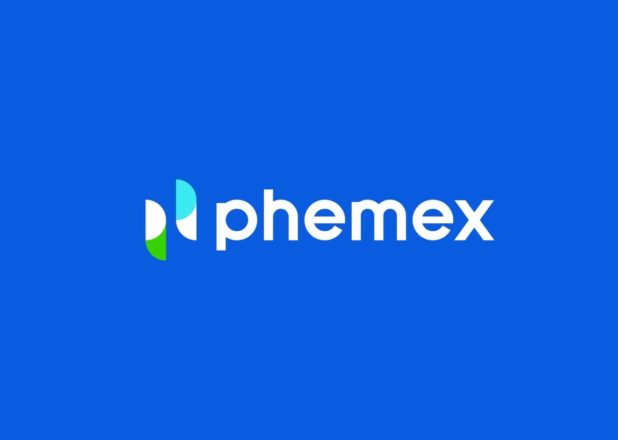How to Profit From Market Volatility Using Linear and Inverse Contracts
Perpetual contracts allow traders to profit during periods of high market volatility depending on which side of the trade is taken.

Key Takeaways
- A Perpetual contract is a cryptocurrency derivative that does not expire over time. Traders may hold a position for an indefinite period of time and close the position at any time.
- The funding rate is paid between long and short position holders. When the funding rate is positive, longs pay shorts and when it is negative, shorts pay longs.
- Traders can engage in linear and inverse contracts depending on which currency they wish to settle in.
Share this article
Perpetual contracts are agreements between buyers and sellers with no specific expiry date, unlike other types of similar contracts such as options or futures. It is for the buyer and the seller to decide when they want to execute the contract. They can hold the position for as long as they want to (perpetually) and execute the contract trade at any time. This is a cash-settled contract; there is no actual delivery of the underlying cryptocurrency. In other terms, traders can speculate on an asset’s price movements without the need to hold the asset itself.
Perpetual Contracts Derive their Value from the Underlying Cryptocurrency of the Contract.
The price of the contract is a direct consequence of the price fluctuation of the underlying asset. Buyers can opt to buy the underlying cryptocurrency if they expect the prices to rise in the future while sellers can initiate the contract if they think the prices will fall in the future.
Traders can use leverage to increase their buying/selling power for perpetual contracts trading. The leverage for perpetual contracts is set by the exchange operator based on its risk tolerance. The higher the leverage that a trader uses, the easier it is to get the position liquidated because the margin ratio might quickly fall below the maintenance margin during volatile market conditions.
For perpetual contracts to converge to the price of the underlying assets, they rely on a scheduled payment between buyers and sellers known as the “funding rate mechanism.” You can think of it as either a fee or a rebate for traders to hold positions. This mechanism balances the buyer and seller demand for the perpetual swap so that its price falls in line with the underlying asset (index price). It is a reflection of both how much leverage each side is employing as well as the delta between the index price and the price of the perpetual contract. Traders should pay attention to the funding periods as they may pay or receive a funding fee for holding a position.
When there is a positive funding interest, buyers “going long” pay the sellers “going short.” Conversely, when the funding rate is a negative rate, the sellers pay the buyers. Similarly, when perpetual contracts are being traded at a premium rate, the funding rate is positive. In this case, the buyers pay the sellers making way for new short positions.
By introducing the funding payment, derivative exchanges can incentivize arbitrageurs to come in to correct the contract’s price by taking the less popular side, which creates a better trading environment for all of the participants.
As mentioned previously, the primary reason perpetuals have become so dominant is because they offer far more leverage in comparison to spot and because they can be margined in cryptocurrencies, eliminating the need to deal with the traditional fiat system.
In this context, Phemex is one of the industry’s most popular exchanges that provides perpetual contracts as a trade instrument. Given the high popularity and demand for these trading instruments in the crypto trading ecosystem, Phemex is proud to have recently launched their ETH inverse contract. To provide additional clarity, it’s important to distinguish between inverse and linear contracts as two separate tools to profit from price fluctuation.
When they first emerged, perpetual contracts were settled in crypto instead of USD. This was fundamental as derivative exchanges found it hard to establish traditional banking partnerships given the perceived risk. In an inverse contract, traders deposit a specific cryptocurrency to begin with and these contracts settle in the underlying cryptocurrency as opposed to the quoted currency (traders need to hold a more volatile asset as margin). As an example, if you were to trade ETH/USD, you would actually receive your payout in ETH itself. As you profit from a long position in ETH, you will receive an ETH payout, but in a smaller amount since ETH itself is more expensive relative to USD. On the flip side, if ETH/USD drops in value, you will be losing ETH at a greater rate since ETH itself is cheaper relative to USD. A simpler way to understand this concept is to think through how the contract is used. Speculators and hedgers trading inverse perpetuals are trading contracts that are priced in dollars, but are collateralizing their positions in crypto.
With the rise of stablecoins, crypto exchanges now offer linearly-settled contracts that avoid touching fiat, but pay out with more intuitive USD-like assets, such as USDT. The margin used for a linear contract is generally a stablecoin thus traders do not have to hedge their position to avoid the risk of holding the cryptocurrency. With linear perpetuals, the speculators, hedgers, and arbitrageurs trading them are mainly concerned with their stablecoin holdings as their contracts and PnL (Profit and Loss) are all measured in dollars.
While inverse perpetuals are the most popular type of contract, linear perpetuals have benefited from the recent increase in stablecoin users and market capitalization. Non-linear perpetuals have also benefited because they are extremely powerful hedging tools for long term BTC holders who don’t want to sell their holdings into fiat.
Share this article
